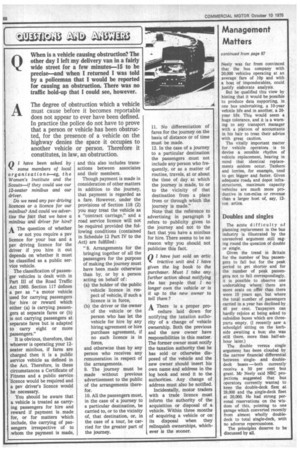Doubles and singles
Page 90

If you've noticed an error in this article please click here to report it so we can fix it.
The acute difficulty of planning replacement in the bus industry is illustrated by the unresolved argument still raging round the question of double or single.
Given the trend in Britain for the number of bus passengers to fall but for the peak period to get shorter and for the number of peak passengers not to fall correspondingly, it is possible to observe one undertaking where there are more seats on offer than there were 10 years ago, but where the total number of passengers carried in a year has declined by 40 per cent. Taxpayers can hardly rejoice at being asked to subsidise buses which are threeparts empty. (I recently saw a schoolgirl sitting on the kerbside awaiting a bus; she was still there, more than half-anhour later.) The double versus single argument has been clouded by the narrow financial differential between singleand doubledeck buses —both currently receive a 50 per cent bus grant. Mr Neely said NBC projections suggested that bus operators currently wanted to keep the double-deck fleet at 28,000 and the single-deck fleet at 20,000. He had strong personal reservations on the wisdom of this, pointing to one garage which converted recently from almost wholly doubledeck to total single-deck, with no adverse repercussions.
The principles deserve to be discussed by all.




































































































































